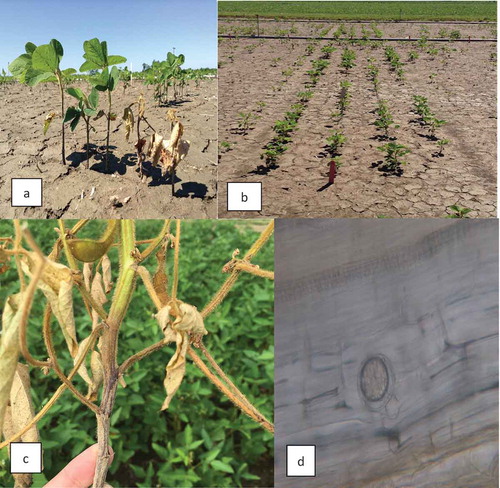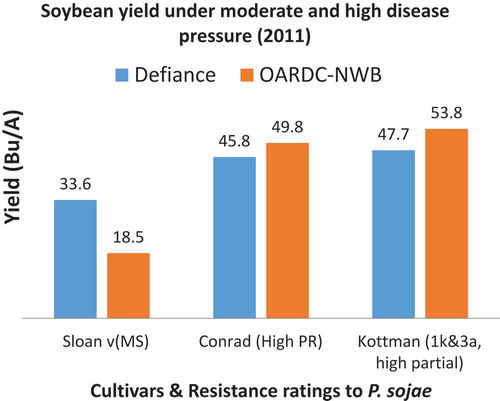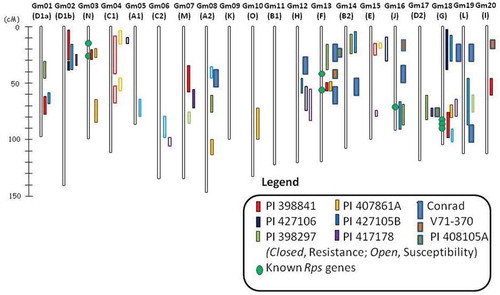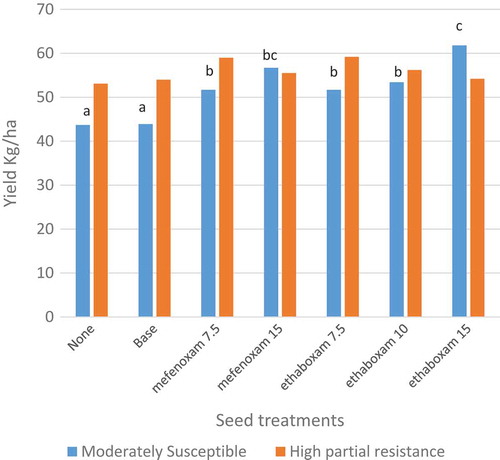Figures & data
Fig. 1 (Colour online) Phytophthora sojae infection of susceptible cultivars during the growing season. (a, b) Early season symptoms include seed rot or skips in the rows and seedling damping-off. (c) Symptoms of late season infections have the characteristic chocolate-brown stem canker combined with overall wilting and early plant death. (d) In both early and late season infections, oospores will develop in the tissue which allow long-term survival in the soil.

Table 1. Predominant virulencea towards resistance genes for Phytophthora sojae (Rps genes) in soybean over the decades.
Fig. 2 (Colour online) Soybean yield comparison of moderately susceptible cultivar ‘Sloan’, high levels of partial resistance ‘Conrad’, and combination of high partial plus 2 Rps gene at two locations in Ohio during 2011 with moderate and high disease pressure from Phytophthora sojae.

Fig. 3 (Colour online) Genomic regions on the soybean genome for Quantitative Disease Resistance Loci towards Phytophthora sojae from nine different recombinant inbred line populations (Tucker et al., Citation2010; Nguyen et al., Citation2012; Wang et al., Citation2012b; Lee et al., Citation2013a, Citation2013b, Citation2014). Closed or solid colours indicate the QDRL is conferred from the resistant parent, open is from the susceptible parent.

Fig. 4 (Colour online) Field evaluations of seed treatment fungicides and rates of mefenoxam and ethaboxam for efficacy towards Phytophthora sojae in 2012. These types of studies require saturated soil conditions, either naturally or through irrigation, shortly after planting. Efficacy can be measured as yield using cultivars that are moderately susceptible or with high levels of partial resistance. In this study, the moderately susceptible cultivar had a yield response with a seed treatment (P < 0.0001) and bars with letters that are the same indicate that those treatments were not significantly different based on Fisher’s protected least significant difference.

